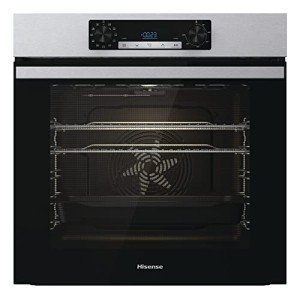
Best Built-In Single Ovens
Add a review FollowOverview
-
Founded Date November 8, 1990
-
Sectors Transportation
-
Posted Jobs 0
-
Viewed 4
Company Description
One Buy A Single Oven Success Story You’ll Never Imagine
A Comprehensive Guide to Buying a Single Oven: What You Need to Know
When it comes to kitchen home appliances, couple of products are as necessary as an oven. Whether you’re a devoted baker, a weekend chef, or somebody who merely wants to warm up leftovers, the best oven can make all the difference in food preparation and cooking. Amongst the different kinds of ovens readily available in the market, single ovens stand apart for their versatility and space efficiency. This post will guide you through the vital considerations when buying a single oven, describing essential features, types, and answering regularly asked concerns.
Comprehending Single Ovens
Single ovens, as the name recommends, include one cooking cavity. They are designed to manage numerous cooking jobs, including baking, roasting, grilling, and broiling. Perfect for compact kitchens or those who do not require the extra space provided by double ovens, single ovens can be built into cabinets or stand alone.
Types of Single Ovens
Single ovens can be found in numerous types, each offering distinct advantages. Here are the primary types to consider:
| Type | Description |
|---|---|
| Traditional | Makes use of top and bottom heating aspects for traditional cooking styles. |
| Convection | Utilizes a fan to flow hot air, leading to even cooking temperatures. |
| Wall Ovens | Built into the wall for space-saving style while staying easy to use. |
| Steam Ovens | Introduces steam for damp cooking, outstanding for baking and reheating. |
| Microwave Ovens | Combines cooking and reheating functionalities with microwave technology. |
Key Features to Consider
When searching for a single oven, it’s important to evaluate different functions that can improve cooking experience and performance. Below are some crucial characteristics to think about:
-
Size and Capacity:
- Measure the available space in your kitchen before selecting an oven. The majority of single ovens range from 24 to 30 inches in width.
- Capacity usually ranges from 2.0 to 5.0 cubic feet, depending on how much you typically prepare or bake.
-
Energy Efficiency:
- Look for designs with an Energy Star ranking to lessen energy consumption and lower energy costs.
-
Oven Types:
- Consider whether you prefer a standard or convection design based upon your cooking preferences.
-
Control Panel:
- Choose easy to use controls, whether they are digital or analog.
- Touch controls typically come with innovative features like programmable settings and timers.
-
Self-Cleaning Functionality:
- Self-cleaning choices save time and effort. Search for ovens with steam or pyrolytic cleaning choices.
-
Additional Features:
- Features such as delay start timers, numerous rack positions, and built-in probes can substantially boost the cooking experience.
Popular Brands
When buying an oven, it is a good idea to think about brands understood for their dependability and quality. A few of the prominent brand names in the market include:
- Bosch
- Samsung
- LG
- Whirlpool
- Electrolux
- Frigidaire
Actions to Buy a Single Oven
Follow this structured procedure to streamline your purchasing choice:
-
Determine Your Cooking Needs:
- Assess your cooking habits and how often you use the oven.
-
Set a Budget:
- Single ovens can vary substantially in price from a couple of hundred to a number of thousand dollars. Set an affordable budget to improve your alternatives.
-
Research study Online:
- Read evaluates on various designs to figure out reliability, performance, and features.
-
See Showrooms:
- Visit device display rooms to see the ovens up close, check their quality, and comprehend their functions.
-
Request Expert Advice:
- Consult with sales representatives or cooking professionals for suggestions based upon your requirements.
-
Compare Warranty Options:
- Look into the warranty policies. A thorough warranty can supply comfort.
FAQs
1. What is the difference in between a conventional oven and a convection oven?
Standard ovens utilize leading and bottom heat sources for cooking, while convection ovens use a fan to circulate hot air, resulting in much faster and more even cooking.
2. Can I set up a single oven myself?
While some house owners select to install their ovens, it’s normally advised to employ an expert to guarantee security and compliance with local building regulations.
3. How typically should I clean my oven?
Frequency depends upon use. A self-cleaning oven can greatly lower the frequency, while manual cleansing ought to ideally be performed seasonally if used routinely.
4. What additional features should I search for?
Look for features such as a timer, hold-up start, and additional cooking modes like air fry or steam for improved functionality.
5. Are gas ovens much better than electric ovens?
The choice in between gas and electric depends mostly on personal choice. Gas provides instant heat and is often preferred by expert chefs, while electric ovens typically offer more consistent cooking temperature levels.
Buying a single oven can raise your cooking experience, leading the way for more pleasurable meal preparation and imagination in the kitchen. As you shop for ovensandhobs the perfect oven, consider your cooking routines, the oven’s features, and your available cooking space. Take your time to check out different options, and by following the guidance supplied in this article, you can make an informed choice that fulfills both your culinary requirements and budget requirements.
In summary, the right single oven will not just enhance your cooking efficiency however likewise make your kitchen a more enjoyable area for culinary exploration. Happy cooking!


